Disclosure: This article contains affiliate links. We may earn a commission from purchases at no extra cost to you, which helps our travel content.
The ferry gently pushed away from Kinshasa's crowded port as I stood at the railing, watching the world's deepest river flow beneath us. My journey bridging the Democratic Republic of Congo and the Republic of Congo wasn't a typical honeymoon recommendation for my clients, but some adventures call to us for reasons beyond explanation. Five years after losing Sarah, these journeys to places less traveled have become my meditation, my healing, and surprisingly, my connection to her adventurous spirit. The Congo River stretched before me, simultaneously dividing and connecting two capital cities with shared heritage but distinct personalities. As we glided toward Brazzaville, I couldn't help but smile thinking how my wedding planning career had unexpectedly led me to become the guy who crosses rivers between countries named Congo, seeking stories most travelers never discover.
Preparing for a Tale of Two Congos
When I tell people I'm heading to 'the Congo,' they inevitably ask which one—and their confusion is understandable. The Democratic Republic of Congo (DRC) and the Republic of Congo share not just a name but a border along the mighty Congo River, with their capitals Kinshasa and Brazzaville facing each other across the water—the world's closest capital cities.
Preparing for this journey required more homework than my typical Caribbean island-hopping adventures. Visa procedures for both countries demand patience and paperwork, especially for the DRC. I spent evenings after wedding consultations meticulously organizing documents and securing invitations from local contacts—a process that reminded me of the detailed wedding timelines I create for clients.
Health preparations were equally important. Yellow fever vaccination is mandatory, and I made sure my travel medical kit was fully stocked with malaria prophylaxis and remedies for potential stomach issues. The medical kit has been my loyal companion since Sarah and I first started traveling to more remote destinations.
I'd be remiss not to mention the importance of travel insurance with evacuation coverage for this region. After researching options extensively, I secured a comprehensive policy that gave me peace of mind knowing that emergency assistance was available if needed.
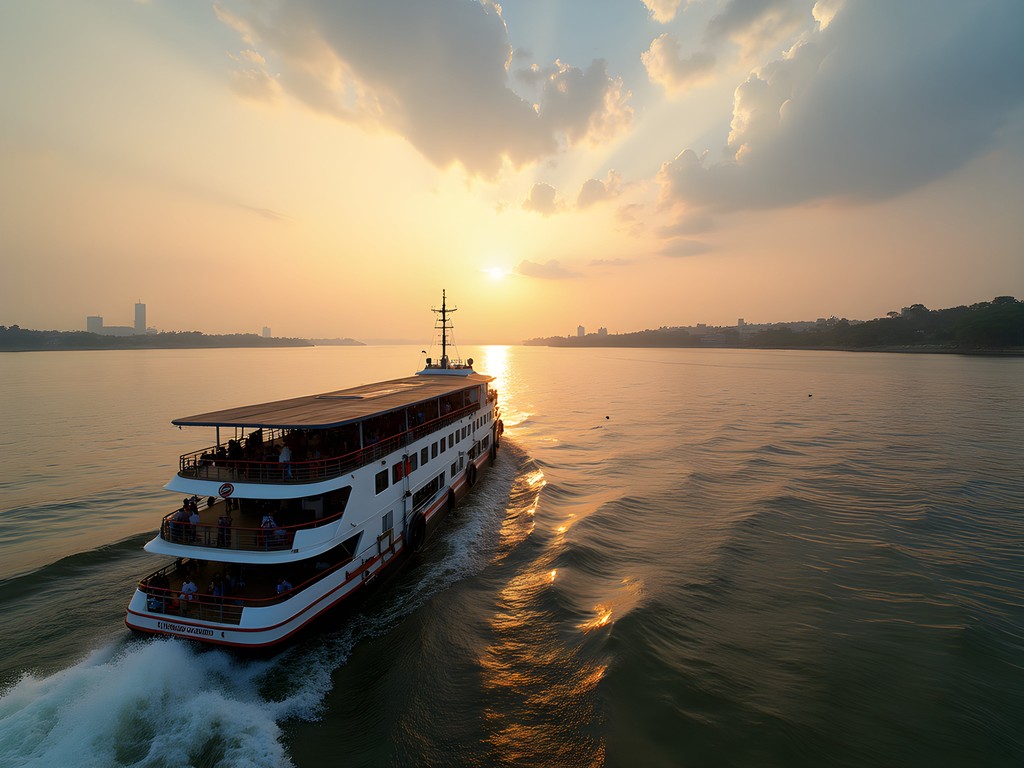
💡 Pro Tips
- Start visa applications at least 8 weeks before travel
- Get a yellow fever vaccination certificate and carry it with your passport
- Register with your country's embassy in both Kinshasa and Brazzaville
Kinshasa: Chaos, Culture, and Unexpected Connections
Kinshasa greeted me with a symphony of sounds, scents, and colors that instantly overwhelmed and captivated me. The DRC's capital is a sprawling metropolis of over 17 million people, making it one of Africa's largest cities—a fact I shared with my daughter during our nightly video calls, watching her eyes widen at the thought of so many people in one place.
Navigating Kinshasa requires both patience and local guidance. I connected with Jean-Pierre, a local guide I found through a travel forum, who became not just my navigator but a friend who shared his city's soul. We wandered through the chaotic Grand Marché where I purchased colorful fabrics that would make stunning table runners for my wedding events back home.
The Académie des Beaux-Arts revealed Kinshasa's thriving art scene, where contemporary artists transform everyday materials into powerful statements. I spent an afternoon in meditative appreciation of these works, finding a moment of stillness amidst the city's perpetual motion—a practice I've maintained since those early days after Sarah's passing when meditation became my lifeline.
One evening, Jean-Pierre took me to a local spot where musicians played rumba congolaise, and the rhythm seemed to pulse through the entire building. An elderly gentleman, noticing my appreciation, explained how this music style had traveled from Cuba back to Congo, evolving into something uniquely Congolese. These unexpected history lessons—connections between seemingly disparate cultures—remind me why I travel.
Staying hydrated in Kinshasa's heat was essential, and my insulated water bottle proved invaluable, keeping water cold throughout long days of exploration. Jean-Pierre jokingly called it my 'American superpower'—never running out of cold water.
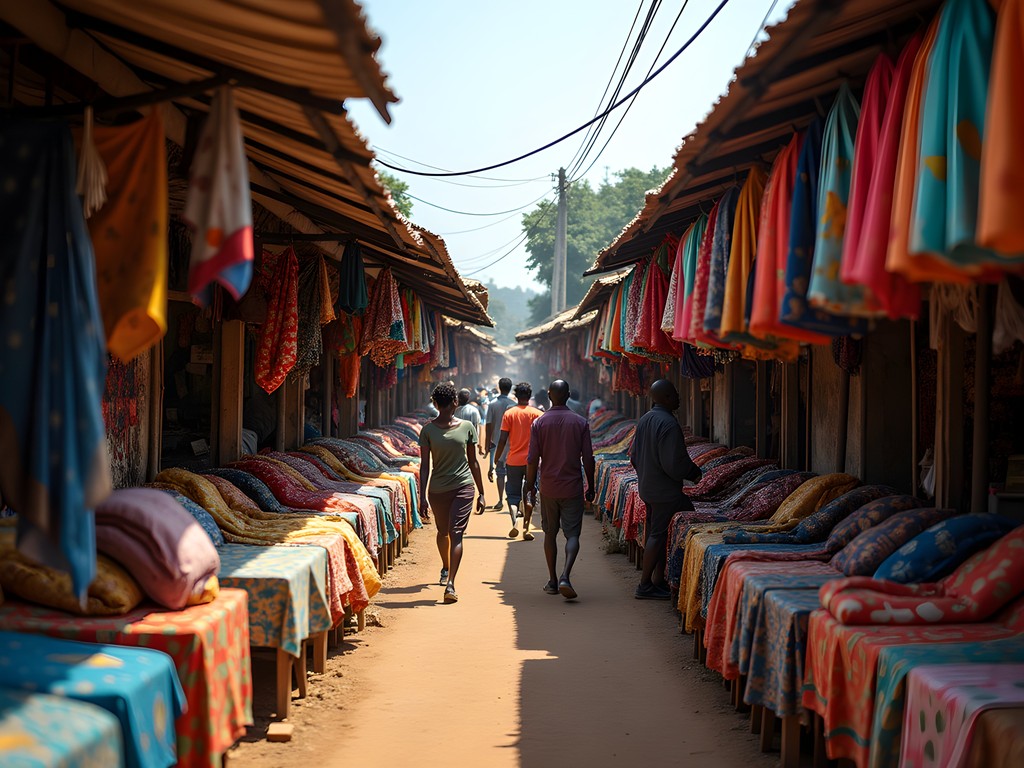
💡 Pro Tips
- Arrange a local guide before arriving in Kinshasa
- Visit the Lola ya Bonobo sanctuary to see conservation efforts for these endangered primates
- Carry small denominations of US dollars for easier transactions
The River Crossing: A Border Like No Other
The journey between Kinshasa and Brazzaville may be one of the world's most fascinating border crossings. Though the capitals are separated by just 4 miles of water, crossing the Congo River feels like traveling between different worlds. This experience has become a highlight I share during my meditation workshops back home—a powerful metaphor for how thin the boundaries between our different life experiences truly are.
I chose the passenger ferry over the faster but more expensive speedboat option, wanting to absorb the river's significance at a slower pace. The Congo River isn't just water; it's the lifeblood of the region, a transportation network, and a cultural dividing line with few equals in the world.
The border formalities require patience and preparation. I made sure my documents were organized in a travel document organizer which kept everything accessible and protected from the river spray. This simple tool has saved me countless headaches at border crossings around the world.
On the ferry, I found myself in conversation with a Congolese businessman who regularly crosses between the two cities. 'These are two lungs of the same body,' he told me, gesturing to the approaching Brazzaville shoreline. 'Different governments, different systems, but the same heart.' His words stayed with me throughout my journey.
The river itself tells stories. Massive cargo barges laden with goods from the interior passed us, some having traveled for weeks from remote regions. Fishermen in wooden pirogues cast their nets in the shadow of our ferry. And as we approached Brazzaville, I could see the stark contrast between the two capitals—Kinshasa's sprawling expanse giving way to Brazzaville's more contained, orderly appearance.
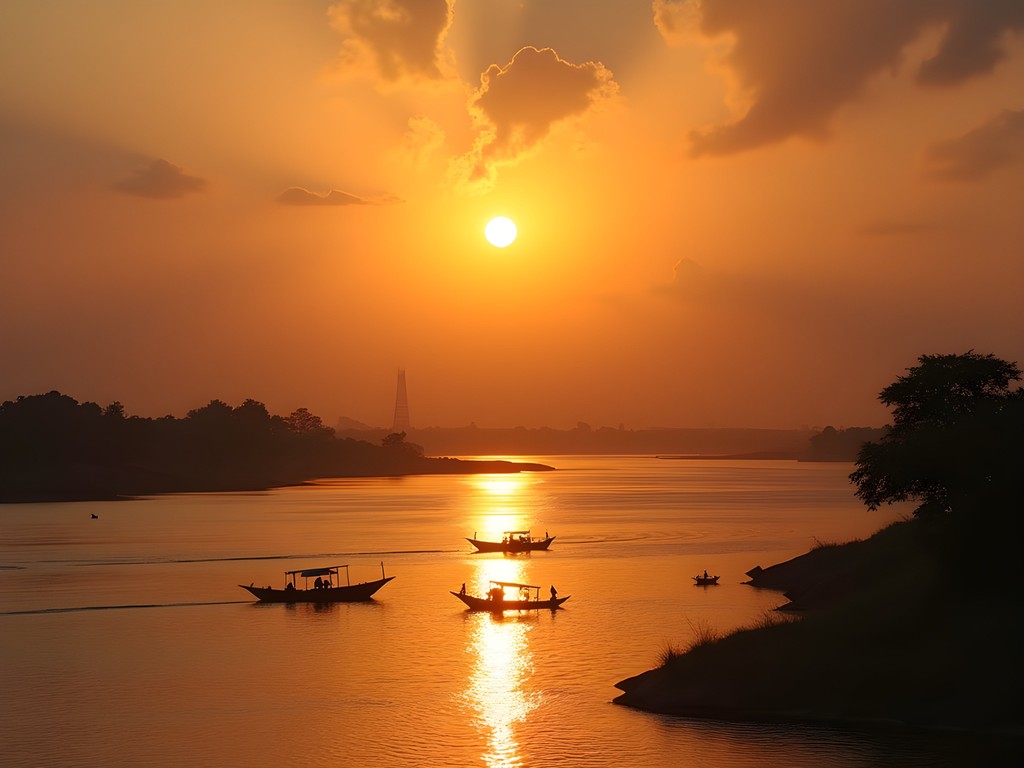
💡 Pro Tips
- Arrive at the ferry terminal early to navigate paperwork before departure
- Keep passport and yellow fever certificate easily accessible
- Exchange some currency before crossing as rates at the border may not be favorable
Brazzaville: The Quieter Congo
Stepping onto Brazzaville's shore feels like entering a different world. The Republic of Congo's capital carries a distinctly French colonial influence that creates an interesting counterpoint to Kinshasa's Belgian heritage. This contrast—two different European powers leaving their marks on neighboring African nations—reminded me of how baseball stadiums across America each carry their own architectural personality despite hosting the same beloved game.
Brazzaville moves at a noticeably slower pace than its counterpart across the river. The wide boulevards lined with palm trees, government buildings with distinctive architecture, and the relative orderliness struck me immediately. My guide Marcel explained that locals call it 'Brazza la verte' (Brazza the green) for its numerous trees and parks.
The city's crown jewel is the Basilique Sainte-Anne, a stunning church whose green-tiled roof and unique architecture make it one of Africa's most distinctive religious buildings. I spent a quiet hour there, finding a moment of meditation amidst the cool interior—something I've made a practice of doing in sacred spaces around the world since beginning my healing journey.
Les Rapides, a series of rapids on the outskirts of the city, offered a natural spectacle that contrasted with the urban environment. Watching the mighty Congo River churn through narrow channels helped me understand why river navigation shaped the development of these twin capitals—boats simply cannot pass these rapids, making this the end point of river travel from the interior.
For accommodations, I chose the Radisson Blu M'Bamou Palace, which provided a comfortable base with stunning river views. From my balcony, I could see Kinshasa's lights twinkling across the water each evening, a reminder of the unique geographic relationship between these capitals.
My evenings often found me at Mami Wata, a riverside restaurant where I could enjoy grilled fish while watching the sunset over the Congo River. My compact binoculars allowed me to observe the distant shoreline of Kinshasa and the river traffic in between—a small luxury that enhanced my appreciation of this unique border setting.
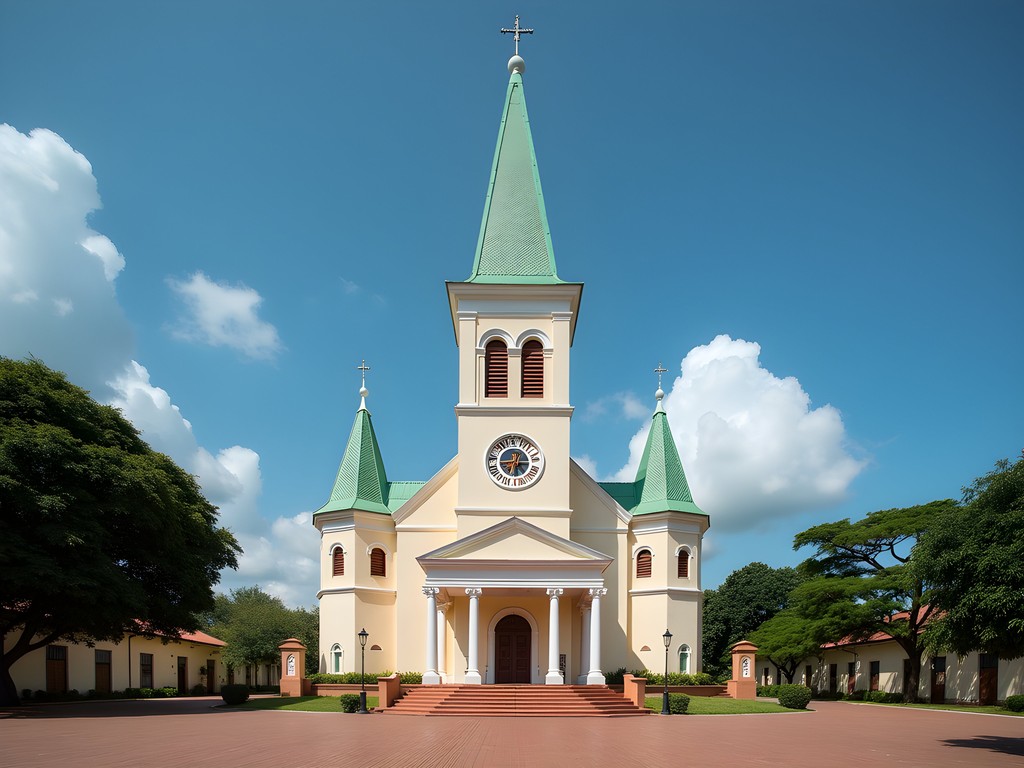
💡 Pro Tips
- Visit the Marien Ngouabi Mausoleum to understand the country's political history
- Take a day trip to Les Rapides to witness the power of the Congo River
- Try the local Ngok beer with grilled fish at riverside restaurants
Beyond the Capitals: Day Trips into Congo's Heart
While the twin capitals formed the core of my journey, I made sure to venture beyond city limits to experience the natural wonders that make both Congos truly special. These excursions provided the meditative moments in nature that have become essential to my travel experience.
From Kinshasa, a day trip to Lola ya Bonobo sanctuary offered a profound encounter with our closest relatives. This sanctuary rescues orphaned bonobos, victims of the bushmeat trade, and prepares them for potential reintroduction to the wild. Watching these intelligent primates interact, I was struck by their social bonds and peaceful nature—so different from the chaos of Kinshasa just an hour away.
On the Brazzaville side, I ventured to Lesio-Louna-Gorilla Natural Reserve, where conservation efforts are helping to protect lowland gorillas. The journey there took us through villages where life continues much as it has for generations, a reminder of how quickly one can move between urban modernity and traditional rural life in this region.
Perhaps my most memorable excursion was to the Livingstone Falls, named after the explorer who navigated much of the Congo River. Standing before these powerful cascades, I felt the same sense of awe that must have struck early explorers. I found a quiet spot to sit in meditation, letting the thunderous sound of the falls wash away all other thoughts—a practice that has helped me process grief and find moments of peace throughout my travels.
For these day trips, my hiking daypack proved essential, carrying water, snacks, and my camera gear comfortably even in the humid conditions. Its compact size made it perfect for both city exploration and these natural excursions.
Each of these journeys outside the capitals revealed different aspects of Congo's complex identity—the urgent conservation challenges, the traditional ways of life that persist, and the natural wonders that have shaped human settlement patterns for centuries. They also provided necessary counterpoints to the urban experiences, creating a more complete picture of these fascinating countries.
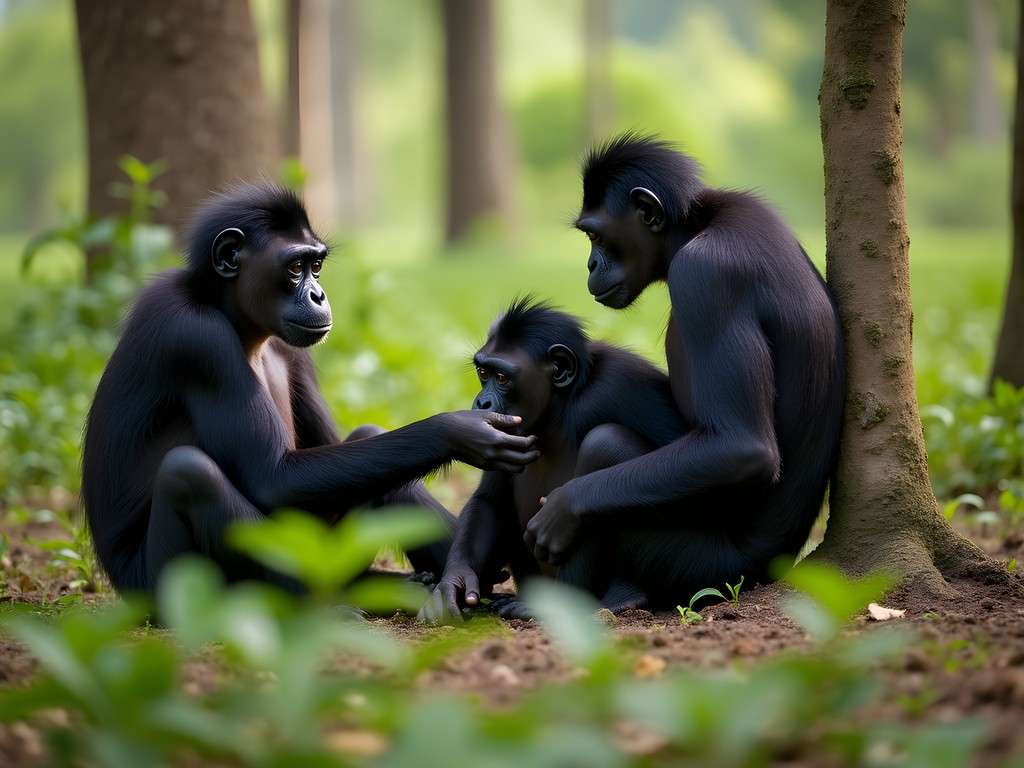
💡 Pro Tips
- Book day trips through reputable operators with conservation connections
- Start early to avoid afternoon heat and rain
- Bring cash for village stops as card payments aren't accepted
Final Thoughts
As my ferry returned to Kinshasa on that final crossing, I reflected on how these two weeks had transformed my understanding of not just the two Congos, but of borders themselves. These nations—sharing a name, a river, and countless cultural connections—reminded me that our divisions are often more artificial than we acknowledge. In my journey from wedding planner to traveler, I've found that the most meaningful experiences often come from crossing boundaries, whether geographic or personal. The two Congos may not make my list of honeymoon recommendations for clients seeking ease and luxury, but for those searching for profound understanding and perspective—as I was after losing Sarah—few destinations offer such powerful insights. If you're ready for an adventure that challenges perceptions and rewards courage, the twin capitals of the Congo await. Just remember to bring patience, preparation, and an open heart for the journey.
✨ Key Takeaways
- Crossing between Kinshasa and Brazzaville offers a unique perspective on how colonial history shaped neighboring African nations
- Advance preparation is essential for visas, health requirements, and border crossings
- Local guides are invaluable for navigating both cities safely and meaningfully
- The contrast between the two capitals provides insight into different development paths despite shared cultural heritage
📋 Practical Information
Best Time to Visit
June-September (dry season)
Budget Estimate
$2,500-3,500 for two weeks excluding flights
Recommended Duration
Minimum 10 days, ideally 14 days
Difficulty Level
Challenging

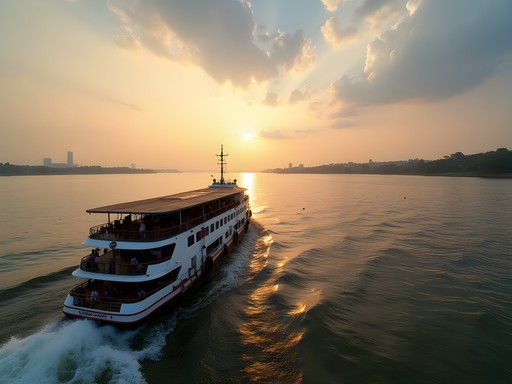
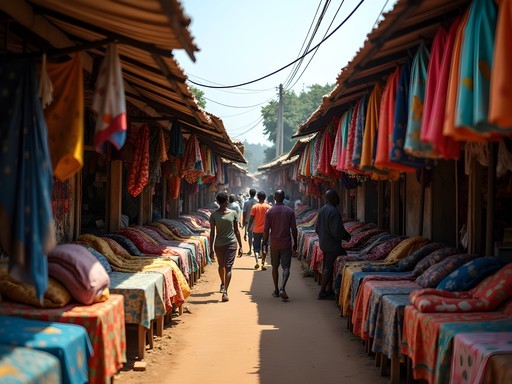

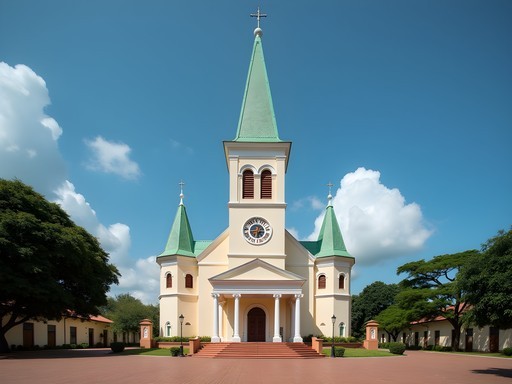









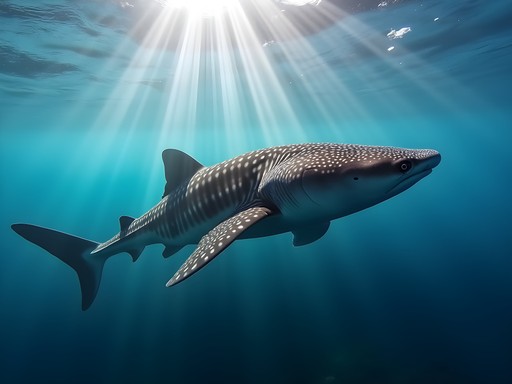
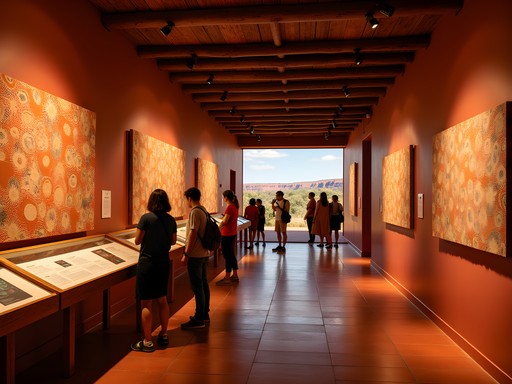
Comments
SoloFemTraveler
Planning this trip as a solo woman - any specific safety advice? Is it ok to do the crossing alone?
Lars Robinson
It's definitely doable solo, but I'd recommend connecting with a local guide at least for the first day in each city. The crossing itself is straightforward, just be firm about official fees only. Dress conservatively and keep valuables hidden. Feel free to DM me for specific contacts I found trustworthy.
GlobeTrekker55
How's the internet connectivity in both cities? Need to stay connected for work while traveling.
winterstar
I found Brazzaville had better connectivity overall. In Kinshasa it was super spotty except in upscale hotels. Definitely get local SIM cards in both places - Airtel worked best for me.
AfricaDreamer
Those river photos are incredible! The contrast between the two cities is fascinating.
Taylor Moreau
Excellent write-up on one of Africa's most fascinating border crossings, Lars. I've crossed between the two capitals several times for business, and your description of the contrast between Kinshasa's energy and Brazzaville's relative calm is spot on. One tip for business travelers: the visa requirements change frequently, so always double-check with both embassies within a week of travel. I found having a travel organizer essential for keeping all documents secure during the crossing. The ferry operators can be quite pushy about 'special services' - always negotiate firmly but respectfully.
CongoExplorer92
Is it safe for solo travelers? Planning to do this route next month and getting nervous about all the stories of corrupt officials.
Taylor Moreau
It's manageable solo, but I'd recommend arranging transport and accommodation in advance. Have small US dollar bills (not too worn) for official fees. Stay confident but respectful with officials. The actual crossing is quite safe - it's the paperwork that's the challenge!
CongoExplorer92
Thanks so much! That's really helpful. Did you stay at any hotels you'd recommend in Brazzaville?
Lars Robinson
If I can jump in - I stayed at Mikhael's Hotel in Brazzaville and found it to be a good mid-range option with reliable WiFi and security. In Kinshasa, Pullman was excellent but pricey. There are decent guesthouses if you're on a budget.
winterstar
Did this crossing last year and it was such an adventure! The immigration process was way more chaotic than I expected. Took almost 2 hours on the DRC side. Lars, did you find any shortcuts for the visa process? Those officials in Kinshasa wanted 'fees' for everything!
Lars Robinson
Thanks for reading! Yeah, the 'fees' situation is tricky. I arranged my visas beforehand through a local contact which helped tremendously. The key is having all documents printed in duplicate and being extremely patient. Did you visit Marché Central while in Kinshasa?
winterstar
I did! That market was insane - so colorful and chaotic. Got some amazing fabric there. The food stalls were intimidating but delicious once I got brave enough to try them!
GlobeTrotter55
Amazing photos! The river crossing looks incredible.
SafetyFirst_Traveler
How safe did you feel in both cities? Considering this trip but concerned about security issues I've read about.
Lars Robinson
Great question. Both cities require common sense precautions - don't flash valuables, be aware of your surroundings, etc. Kinshasa feels more unpredictable, but I never felt directly threatened. Brazzaville felt noticeably calmer. I'd recommend researching current conditions before going as things can change quickly in both countries.
Kimberly Murphy
I'd echo Lars and add that having a local contact or guide makes a huge difference for safety. The main tourist areas in both cities are generally fine during daylight hours.
Kimberly Murphy
Lars, this brought back so many memories of my own trip across these two fascinating capitals! The ferry crossing is such a unique border experience. For anyone planning this journey, I'd add that the markets in Kinshasa are incredible for textiles - I still have gorgeous fabric I bought there. One thing I wish I'd known was how much easier it is with a local guide in Kinshasa. I found mine through a hostel recommendation and it made navigating the city so much easier. I carried my travel wallet under my clothes the entire time which gave me peace of mind in the crowded areas. Did you make it to Lola ya Bonobo while in Kinshasa? That sanctuary was a highlight for me.
roamnomad2125
Kimberly - YES to local guides! We hired one in both cities and it was worth every franc. The Lola ya Bonobo sanctuary was amazing, wasn't it?
Kimberly Murphy
Absolutely incredible! Seeing those bonobos up close was one of the most special wildlife encounters I've had in Africa. Did you try the Congolese coffee in Brazzaville? I'm still dreaming about it!
roamnomad2125
Just got back from doing this exact crossing last month! The ferry experience was wild - so much more chaotic than you described, Lars! We got stuck for 3 hours because of some paperwork issue with another passenger. One tip for anyone going: bring small USD bills for unexpected 'fees' and definitely pack snacks for the wait. The contrast between the two cities is fascinating though - Brazzaville felt like stepping into a different world after Kinshasa's intensity. Did you check out Livingstone Falls while you were there?
Lars Robinson
Sounds like you got the full Congo crossing experience! I was lucky with timing I guess. And yes, I visited Livingstone Falls - absolutely spectacular. I mentioned it briefly in the article but could have written pages just about that!
redpro
Just booked my tickets after reading this! So excited!
Lars Robinson
That's great to hear! Feel free to DM me if you have specific questions about either city. You're going to have an amazing experience!
Venture X
Premium card with 2X miles, $300 travel credit, Priority Pass